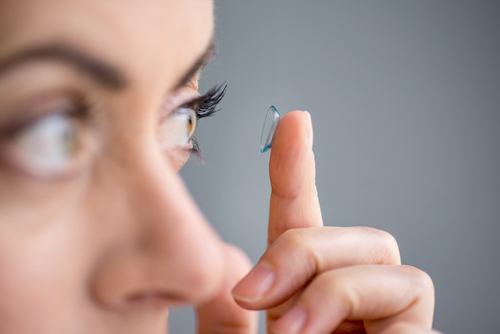Google is currently developing smart contacts that may help diabetics.
In the last few years, different types of vision technology that have been integrated into familiar devices have been taking off―especially incorporating new, innovative devices into contact lenses. After all, contacts are a no-hands necessary device that many people wear each and every day, so why not incorporate important innovations right into them to improve our day-to-day lives?
In fact, just this past summer, researchers at the University of Washington unveiled that they were looking into implanting semitransparent red and blue LED lights in contact lenses so that users could receive and display sharp visual images and video right on their lenses. It is only a matter of time before similar innovations begin to take off.
However, Google is currently developing a new venture that would take contact technology far past the point of entertainment. They are currently working on a prototype contact lens that measures the level of glucose in a person’s tears, specifically people with diabetes who need to monitor their glucose levels frequently.
People with diabetes usually have a hard time controlling the level of sugar that is in their bloodstream. Typically, when someone with diabetes wants to monitor their glucose levels, they use a small pin prick to swab their blood onto a test strip. From there, they feed it to an electronic reader which discloses their glucose levels. However, Google’s smart contacts would make this monitoring much less invasive.
According to a report by CNN, the prototype contacts created by Google are outfitted with tony wireless chips and glucose sensors, sandwiched between two lenses. They are able to measure blood sugar levels once per second, and Google is working on putting LED lights inside the lenses that would flash when those levels became too high.
“The electronics in the lens are so small that they appear to be specks of glitter,” Google said. “The wireless antenna is thinner than a human hair.”
While these innovative (and potentially life-changing) contacts are not quite for sale yet, they are being tested and Google is running clinical research studies to learn more. They are also in discussion with the U.S. Food and Drug Administration, which would potentially have to approve the devices before they were put into day-to-day use.
However, the fact that these types of devices for diabetics are even being discussed is a step in the right direction. Diabetes is a very serious problem, affecting about 1 in 19 people around the world (1 in 12 in the United States alone). There are also many serious eye diseases that stem from diabetes, such as diabetic eye disease. This common vision problem is the single leading cause of blindness and vision loss, and people who have diabetes are 25-30 times more likely to lose their sight from this disease.
Therefore, it’s important that researchers are putting diabetes at the forefront of their technological innovations and are hoping to make this disease easier to manage for all. To learn more about diabetic eye disease, be sure to contact OCLI today.
Research: Source
